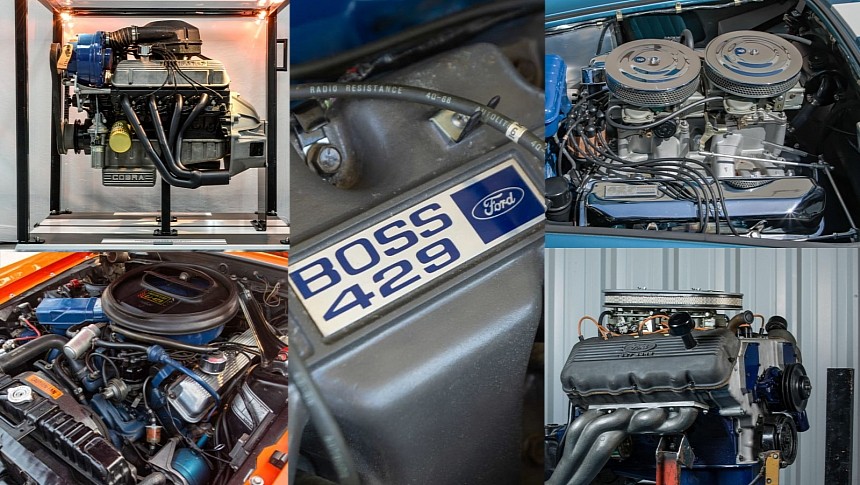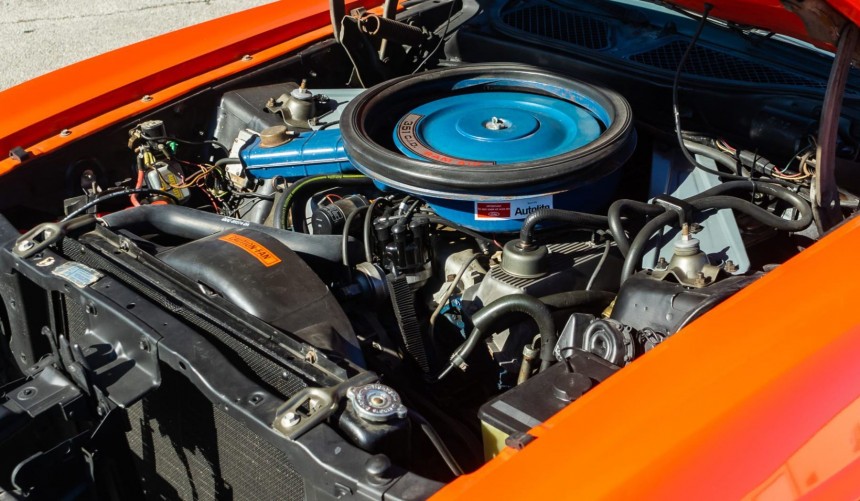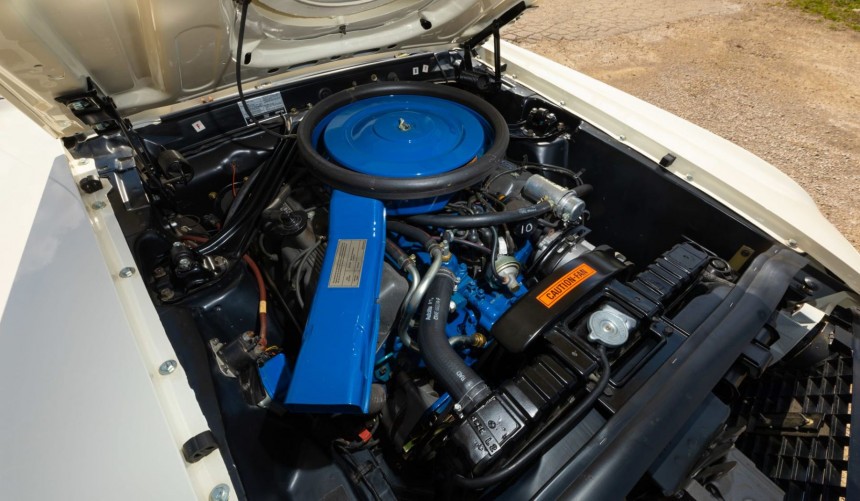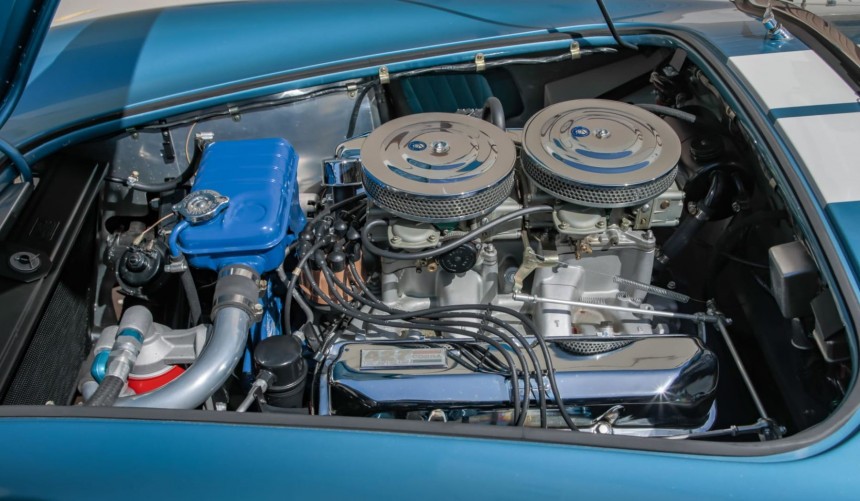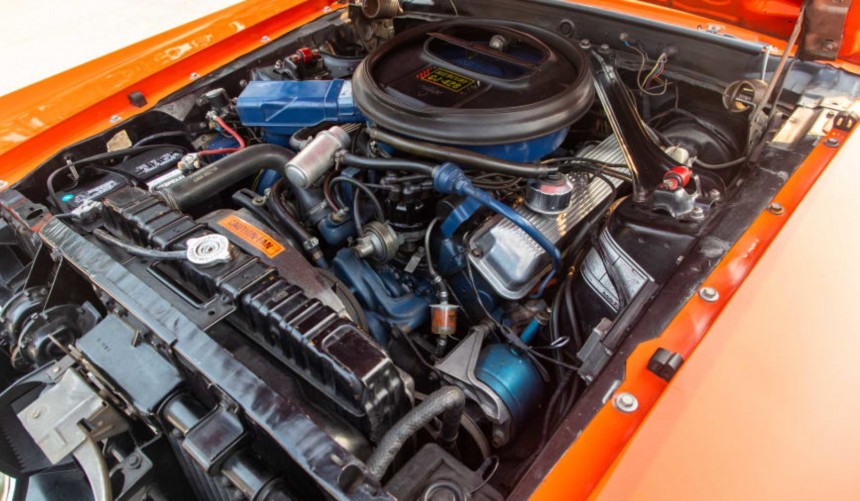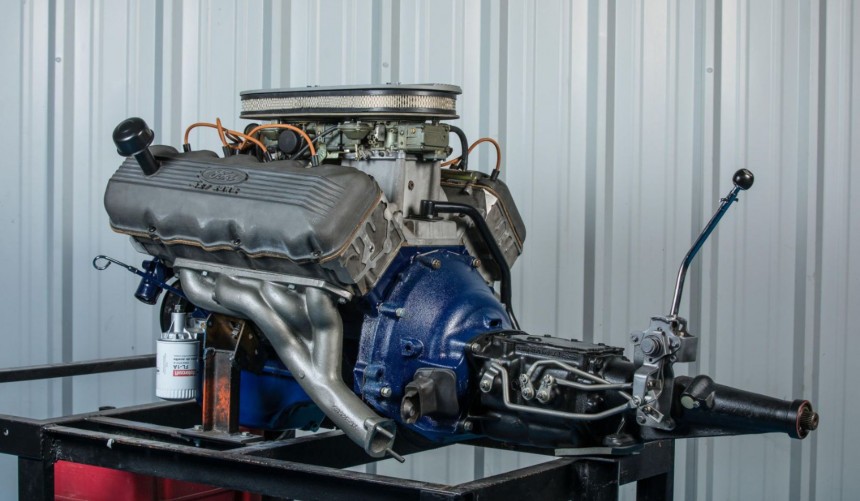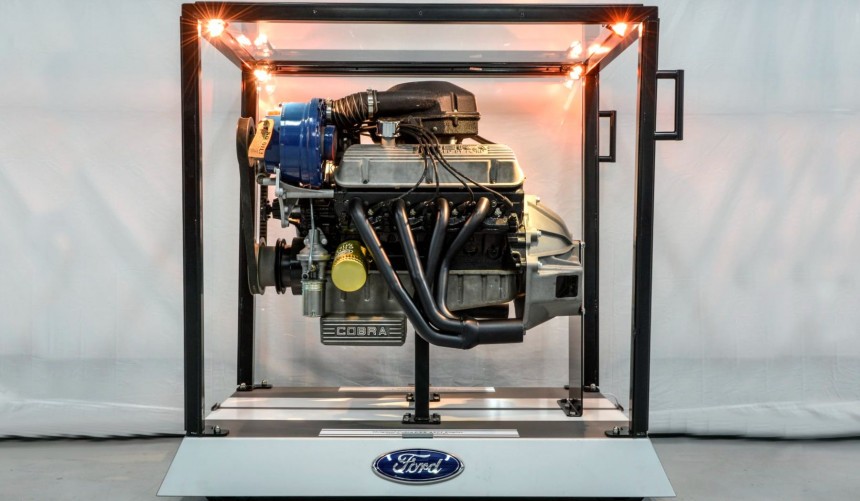During what was arguably the most exciting period of the American automotive industry, Ford helped take the American V8 to new performance heights.
Last year (2023), Ford celebrated its 120th anniversary as well as two decades since it produced its 100th million V8 engine.
Like all the big names in the automotive industry, Ford has been downsizing ICEs and welcoming electric power in recent years.
Nevertheless, the corporation hasn't given up on the good old V8 engine, and so far, it seems determined to keep it alive.
But while the Blue Oval still develops a series of high-performance V8s, some of its greatest hit the streets, drag strips, and tracks during the sixties and early seventies.
The 1971 model year marked the beginning of the end for muscle cars. However, Ford wasn't quite done with high-performance models.
Though the 302 and 429 Boss Mustangs were discontinued, the Blue Oval introduced one final golden-age Boss powered by a bespoke 351 engine.
Based on the 335-series Cleveland V8 architecture, this high-performance 351-ci (5.8-liter) known as R-code received four-bolt mains, forged steel conrods, forged aluminum pistons, a more aggressive cam, revamped cylinder heads, and a 750-cfm four-barrel carburetor sitting on top of the specifically-developed alloy intake manifold.
The upgrades amounted to 330 hp and 370 lb-ft (501 Nm) of torque, which meant the V8 was more potent than the discontinued Boss 302's highly-praised small block.
The engine made the heavier 1971 Mustang Boss 351 one of the fastest high-performance versions of the first-generation 'Stang, as it could run the quarter mile in the mid-to-high 13-second range.
Unfortunately, the car and its terrific V8 were discontinued after the 1971 model year, with only 1,806 examples leaving the factory.
During the sixties and early seventies, Ford built several 429-ci (7.0-liter) V8s, but unquestionably, the most exotic was the Boss 429.
Introduced in 1969, when the Mustang with the same name was released, the Big Boss was unleashed on public roads in an effort to gain homologation for NASCAR use.
An evolution of the 385 "Lima" big-block V8 series, the legendary 429 used four-bolt mains, a forged steel crank, forged steel connecting rods, a pair of bespoke aluminum heads with semi-hemi combustion chambers, and a 735-cfm Holley four-barrel carm mounted on top of a high-flow aluminum intake manifold.
Rated at 375 hp and 450 lb-ft (610 Nm) of torque, the Boss 429 was Ford's most powerful production V8 of the era - tied with the 1971 429 Super Cobra Jet.
Even more impressive, it held this title until the year 2000, when it was dethroned by the SVT Mustang Cobra R's 385-hp 5.4-liter DOHC Modular.
Though the Mustang chassis was chosen to homologate the engine due to its marketing success, the Boss 429 powered the Ford Torino and Mercury Cyclone in NASCAR.
With this legendary engine under the hood, FoMoCo dominated the 1969 season by racking up 30 victories in 54 races.
A list of Ford's greatest V8s from the golden age of muscle cars wouldn't be complete without the venerable 427 FE.
Throughout its lifespan (1963-1968), the 427 FE - which actually displaced 425.98 cubic inches or 6.98 liters - was built using two distinct block versions (side- and top-oiler), as well as different intake manifold designs.
The side-oiler 427 is best known for powering the GT40s to a 1-2-3 finish at Le Lans in 1966 but also spawned the most refined street-legal.
Dubbed Medium Riser after the height of its intake, this 427 was available in various Ford and Mercury models from 1965 to 1967.
In terms of output, it could make either 410 hp and 476 lb-ft (645 Nm) of torque when equipped with a single four-barrel carb or 425 hp and 480 lb-ft (651 Nm) with a dual four-barrel Holleys.
Though the rare, drag-oriented R-Code Hi-Riser was more powerful, the Mid-Riser was the more versatile, street-friendly 427 FE, which is why we chose it in favor of the R-Code.
In the second part of the 1968 model year, Ford replaced the long-running 427 with a new FE-based performance V8 dubbed Cobra Jet.
Built on the same assembly line as other FE engines and featuring more cost-effiective components, it gave the corporation a more reliable, "streetable" and, most importantly, cheaper alternative to the 427.
Available until the end of the 1969 model year on virtually all Ford and Mercury models with an engine bay large enough to accommodate it, the 428CJ used a variety of cylinder heads and could be had in two compression ratio configurations: 10.8:1 or 10.6:1.
However, regardless of the compression ratio, the output rating of 335 hp and 440 lb-ft (600 Nm) of torque was the same for both configurations.
Customers who ordered a 428CJ engine could also check the Drag Pack or Super Drag Pack boxes on the options list, which transformed the Cobra Jet into the Super Cobra Jet.
While the output didn't change, the engine received a sturdier crankshaft, 427 Le Mans-spec connecting rods with capscrews instead of bolts, and an oil cooler - giving drag racers a better platform to modify the V8 into a fire-spitting monster.
Though short-lived and less powerful in stock form than the '71 385-series-based 429 Cobra Jets, the 427CJ and SCJ became legendary on the drag strip, particularly in the Stock and Super Stock classes, where they were (and still are) highly successful.
Affectionately known as "Cammer" among Ford enthusiasts, the 427-ci (7.0-liter) powerhouse was born in 1964 with the sole purpose of destroying Chrysler's 426 HEMI.
Alegidly put together in 90 days, it was based on a slightly modified 427 FE side-oiler block.
But while the block and internals were largely the same as the race-spec side oiler, the Cammer featured novel cylinder heads with hemispherical combustion chambers and single overhead cams driven by a six-foot-long (1.8 m) timing chain.
This legendary engine was rated at 616 hp and 515 lb-ft (698 Nm) of torque when equipped with a single four-barrel carb. But Ford's engineering wizards also developed a dual four-barrel version that pushed output to 657 hp and 575 lb-ft (780 Nm) of torque.
Dubbed "too European" by NASCAR boss Bill France and subsequently banned from the competition, the mighty engine never went head-to-head with the HEMI on the track, nor did it get to power a street-legal Ford.
Nevertheless, around 500 units were offered to select buyers through Ford's dealership networks, and the engine eventually became a legend in non-stock drag racing classes.
Although it's the smallest displacement engine on our list, the 289, informally known as the HiPo or K-code (after the letter found in the VIN of the cars it powered), remains a big part of Ford's high-performance V8 history.
One of FoMoCo's first high-performance engines based on a small-block architecture, the HiPo debuted in the 1963 Fairlane.
Based on the new 289-ci (4.7-liter) Challenger V8 introduced a few months earlier, it was engineered to maximize performance and rev freely in the high-RPM range.
Compared to its standard sibling, it received many upgrades, including a hotter cam, beefier conrods, revised cylinder heads with smaller combustion chambers, cast spring cups, and screw-in rocker-arm studs.
Moreover, it featured a larger Autolite 4100 series four-barrel carb, low-restriction exhaust manifolds, and, eventually, a dual-point ignition system.
Rated at 271 hp and 312 lb-ft (423 Nm) of torque, the HiPo was available on the Fairlane and the Mustang but was built in limited quantities due to its high production cost.
From 1965 to 1967, a modified version of the HiPo (pictured above) was also used on the Shelby GT350. With new exhaust headers, an aluminum intake, and a 715-cfm Holley four-barrel carb, the initial Shelby version made 306 hp and 329 lb-ft (446 Nm).
From 1966, Shelby offered an optional Paxton supercharger kit which enabled the already-upgraded 289 to make 390 hp.
Like all the big names in the automotive industry, Ford has been downsizing ICEs and welcoming electric power in recent years.
Nevertheless, the corporation hasn't given up on the good old V8 engine, and so far, it seems determined to keep it alive.
But while the Blue Oval still develops a series of high-performance V8s, some of its greatest hit the streets, drag strips, and tracks during the sixties and early seventies.
Boss 351
Though the 302 and 429 Boss Mustangs were discontinued, the Blue Oval introduced one final golden-age Boss powered by a bespoke 351 engine.
Based on the 335-series Cleveland V8 architecture, this high-performance 351-ci (5.8-liter) known as R-code received four-bolt mains, forged steel conrods, forged aluminum pistons, a more aggressive cam, revamped cylinder heads, and a 750-cfm four-barrel carburetor sitting on top of the specifically-developed alloy intake manifold.
The upgrades amounted to 330 hp and 370 lb-ft (501 Nm) of torque, which meant the V8 was more potent than the discontinued Boss 302's highly-praised small block.
The engine made the heavier 1971 Mustang Boss 351 one of the fastest high-performance versions of the first-generation 'Stang, as it could run the quarter mile in the mid-to-high 13-second range.
Unfortunately, the car and its terrific V8 were discontinued after the 1971 model year, with only 1,806 examples leaving the factory.
Boss 429
Introduced in 1969, when the Mustang with the same name was released, the Big Boss was unleashed on public roads in an effort to gain homologation for NASCAR use.
An evolution of the 385 "Lima" big-block V8 series, the legendary 429 used four-bolt mains, a forged steel crank, forged steel connecting rods, a pair of bespoke aluminum heads with semi-hemi combustion chambers, and a 735-cfm Holley four-barrel carm mounted on top of a high-flow aluminum intake manifold.
Rated at 375 hp and 450 lb-ft (610 Nm) of torque, the Boss 429 was Ford's most powerful production V8 of the era - tied with the 1971 429 Super Cobra Jet.
Even more impressive, it held this title until the year 2000, when it was dethroned by the SVT Mustang Cobra R's 385-hp 5.4-liter DOHC Modular.
Though the Mustang chassis was chosen to homologate the engine due to its marketing success, the Boss 429 powered the Ford Torino and Mercury Cyclone in NASCAR.
With this legendary engine under the hood, FoMoCo dominated the 1969 season by racking up 30 victories in 54 races.
427 FE Medium Riser
Throughout its lifespan (1963-1968), the 427 FE - which actually displaced 425.98 cubic inches or 6.98 liters - was built using two distinct block versions (side- and top-oiler), as well as different intake manifold designs.
The side-oiler 427 is best known for powering the GT40s to a 1-2-3 finish at Le Lans in 1966 but also spawned the most refined street-legal.
Dubbed Medium Riser after the height of its intake, this 427 was available in various Ford and Mercury models from 1965 to 1967.
In terms of output, it could make either 410 hp and 476 lb-ft (645 Nm) of torque when equipped with a single four-barrel carb or 425 hp and 480 lb-ft (651 Nm) with a dual four-barrel Holleys.
Though the rare, drag-oriented R-Code Hi-Riser was more powerful, the Mid-Riser was the more versatile, street-friendly 427 FE, which is why we chose it in favor of the R-Code.
428 Cobra Jet and Super Cobra Jet
Built on the same assembly line as other FE engines and featuring more cost-effiective components, it gave the corporation a more reliable, "streetable" and, most importantly, cheaper alternative to the 427.
Available until the end of the 1969 model year on virtually all Ford and Mercury models with an engine bay large enough to accommodate it, the 428CJ used a variety of cylinder heads and could be had in two compression ratio configurations: 10.8:1 or 10.6:1.
However, regardless of the compression ratio, the output rating of 335 hp and 440 lb-ft (600 Nm) of torque was the same for both configurations.
Customers who ordered a 428CJ engine could also check the Drag Pack or Super Drag Pack boxes on the options list, which transformed the Cobra Jet into the Super Cobra Jet.
While the output didn't change, the engine received a sturdier crankshaft, 427 Le Mans-spec connecting rods with capscrews instead of bolts, and an oil cooler - giving drag racers a better platform to modify the V8 into a fire-spitting monster.
Though short-lived and less powerful in stock form than the '71 385-series-based 429 Cobra Jets, the 427CJ and SCJ became legendary on the drag strip, particularly in the Stock and Super Stock classes, where they were (and still are) highly successful.
SOHC 427 Cammer
Alegidly put together in 90 days, it was based on a slightly modified 427 FE side-oiler block.
But while the block and internals were largely the same as the race-spec side oiler, the Cammer featured novel cylinder heads with hemispherical combustion chambers and single overhead cams driven by a six-foot-long (1.8 m) timing chain.
This legendary engine was rated at 616 hp and 515 lb-ft (698 Nm) of torque when equipped with a single four-barrel carb. But Ford's engineering wizards also developed a dual four-barrel version that pushed output to 657 hp and 575 lb-ft (780 Nm) of torque.
Dubbed "too European" by NASCAR boss Bill France and subsequently banned from the competition, the mighty engine never went head-to-head with the HEMI on the track, nor did it get to power a street-legal Ford.
Nevertheless, around 500 units were offered to select buyers through Ford's dealership networks, and the engine eventually became a legend in non-stock drag racing classes.
Honorable mention: 289 HiPo (K-code)
One of FoMoCo's first high-performance engines based on a small-block architecture, the HiPo debuted in the 1963 Fairlane.
Based on the new 289-ci (4.7-liter) Challenger V8 introduced a few months earlier, it was engineered to maximize performance and rev freely in the high-RPM range.
Compared to its standard sibling, it received many upgrades, including a hotter cam, beefier conrods, revised cylinder heads with smaller combustion chambers, cast spring cups, and screw-in rocker-arm studs.
Moreover, it featured a larger Autolite 4100 series four-barrel carb, low-restriction exhaust manifolds, and, eventually, a dual-point ignition system.
Rated at 271 hp and 312 lb-ft (423 Nm) of torque, the HiPo was available on the Fairlane and the Mustang but was built in limited quantities due to its high production cost.
From 1965 to 1967, a modified version of the HiPo (pictured above) was also used on the Shelby GT350. With new exhaust headers, an aluminum intake, and a 715-cfm Holley four-barrel carb, the initial Shelby version made 306 hp and 329 lb-ft (446 Nm).
From 1966, Shelby offered an optional Paxton supercharger kit which enabled the already-upgraded 289 to make 390 hp.
